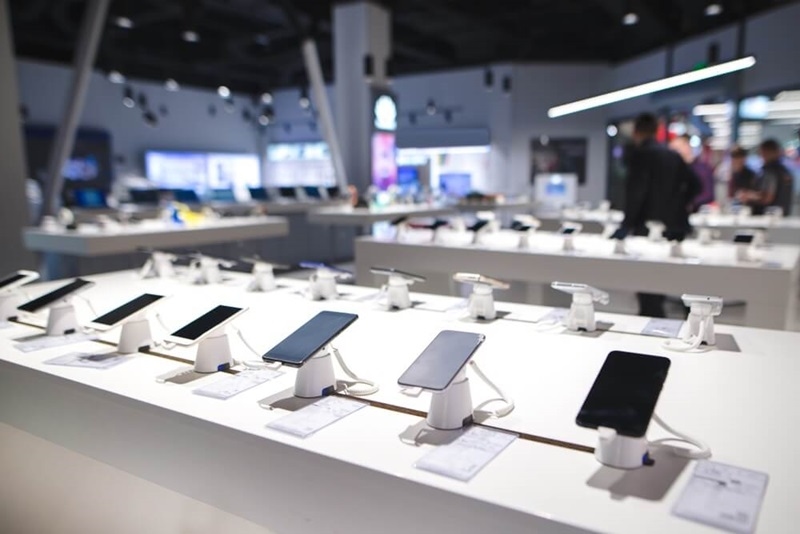
How to Shop Electronics for Maximum Savings Online?

Electronics have become part of everyday life. Phones, laptops, smartwatches, wireless earbuds—you name it, most of us use them daily. But buying them? That’s a different story. With endless options and prices that change almost overnight, it’s easy to overspend. The good news? Scoring a deal isn’t luck. It’s strategy.
If you’ve ever wondered how to shop electronics online without draining your wallet, this guide walks you through it. From spotting the right moment to buy, to stacking discounts and avoiding scams, it’s all here.
Why Electronics Feel Expensive
Before diving into tactics, let’s pause. Why does it feel like electronics cost more than ever? Partly, it’s rapid innovation—new models replace old ones every year. Add supply chain shifts and demand spikes, and prices jump around like crazy. That unpredictability makes timing crucial.
How to Shop Electronics Like a Pro
So, where do you start? The trick is to treat shopping like research, not impulse. Make a shortlist of what you need and compare across platforms. Track price changes. Subscribe to alerts. And don’t forget to ask yourself: Do I want the latest model, or will last year’s version do just fine?
Here’s a golden rule: the “new release” hype often drives prices sky-high. Waiting a few months usually means lower prices and more device coupons floating around.
Look Out for Gadget Offers
One of the easiest ways to save is to keep your eyes open for gadget offers. Big e-commerce sites run daily and weekly lightning deals. Smaller retailers offer flash sales to stay competitive.
But here’s a tip—don’t just trust the “deal” label. Use price comparison tools to see if that shiny discount is actually new, or if the price was bumped up last week. Real savings come from knowledge, not marketing tricks.
Seasonal Tech Discounts
Certain times of the year are goldmines. Black Friday. Cyber Monday. Back-to-school season. These are when seasonal tech discounts slash prices across categories. Even lesser-known events, like mid-year clearance sales, can hide gems.
A practical tip? Build a wishlist ahead of these events. When the sale starts, you’re not scrambling. You know exactly what you want, and you can check quickly whether the discount is worth it.
Stack Device Coupons with Cashbacks
Coupons alone save money, but when paired with cashbacks, the results are even better. Many stores now accept multiple types of device coupons—some from the retailer, others from credit cards or wallet apps.
Imagine this: you find a laptop discounted by 20%, apply a coupon for another $50 off, and then your payment card gives 5% cashback. Suddenly, that “expensive” purchase doesn’t feel so painful.
Shopping Electronics Online Safely
Of course, savings don’t matter if you get duped. Shopping electronics online requires a bit of caution. Always stick to trusted sites or verified sellers. Check return policies. Read reviews—not just the glowing five-star ones but the critical two-star ones too.
And here’s a quick hack: search for the product model plus the word “issues” or “problems.” You’ll often find real customer experiences that official product pages don’t mention.

Affordable Gadgets Worth Considering
Sometimes, the smartest move isn’t finding discounts on premium tech but focusing on affordable gadgets that do the job. Not everyone needs a $1,200 smartphone. Mid-range devices often deliver 80% of the features for half the price.
Brands are catching on to this demand, and competition in the budget segment is fierce. That means better quality than ever before. If you’re flexible, affordable doesn’t mean settling—it means being savvy.
Don’t Ignore Refurbished
Refurbished tech still makes some people nervous. But done right, it’s one of the best ways to save. Certified refurbished devices often come with warranties, meaning you’re not risking much.
It’s also a greener option, extending the life of devices instead of adding to e-waste. So, if you want savings plus sustainability, refurbished is worth exploring.
Timing Matters More Than You Think
Ever noticed how smartphone prices drop right before a new model launches? Or how laptops suddenly go on sale at the end of summer? Timing is everything.
If you’re patient, you can avoid paying the “new launch tax.” Wait it out a little. Even two or three months after release, you’ll find better deals.
Subscriptions and Trade-In Programs
Trade-ins are underrated. Many retailers let you hand over your old device for credit toward a new one. Pair that with a discount, and you’ve cut your costs dramatically.
Also, subscription programs—while they sound like extra expense—sometimes make sense. They bundle upgrades, insurance, and even replacement services, which can save money in the long run.
Compare Across Borders
Global shopping has opened new doors. Sometimes, the same product is cheaper in another region, even after shipping. Import duties might eat into savings, but if you’re careful, you can come out ahead.
Just make sure warranties apply in your country. No one wants to ship a broken device back overseas.
Avoiding Pitfalls
The chase for deals has its dangers. Fake websites, counterfeits, and misleading listings still lurk online. Watch for too-good-to-be-true prices, especially on premium brands.
Stick to trusted payment methods. Avoid bank transfers unless you know the seller personally. Credit cards and wallet services often give extra buyer protection.
Why Reviews Still Matter
In the rush for the lowest price, it’s easy to forget the value of reviews. Before buying, check what real users say about the product and the seller. Verified reviews reveal whether a device holds up over time or has hidden flaws. Skimming through even a handful can save you from wasting money. Price matters, yes, but so does buying something that actually lasts.
Don’t Overlook Warranty and After-Sales Support
Price tags often steal the spotlight, but what happens after the purchase is just as important. A slightly more expensive deal from a seller who offers a strong warranty and responsive customer service may actually save you money in the long run.
Repairs, replacements, or technical issues can crop up when you least expect them, and that’s when reliable support proves its worth. Before hitting “buy,” double-check warranty terms and how after-sales support works. It’s not just about buying a device—it’s about securing peace of mind for the months or even years you’ll use it.
Wrapping It All Up
Learning how to shop electronics smartly is about more than just finding the lowest number on the screen. It’s about timing purchases, stacking discounts, watching for genuine gadget offers, and balancing value with reliability.
Affordable doesn’t mean cheap. It means knowing where to look, what to skip, and when to hit that “buy now” button. Whether it’s grabbing seasonal tech discounts, making the most of device coupons, or simply picking affordable gadgets that fit your lifestyle, smart shopping leaves you with both savings and satisfaction.
At the end of the day, the best deal isn’t just about price—it’s about confidence. When you click “order” and know you’ve outsmarted the system, that’s when shopping feels worth it.




